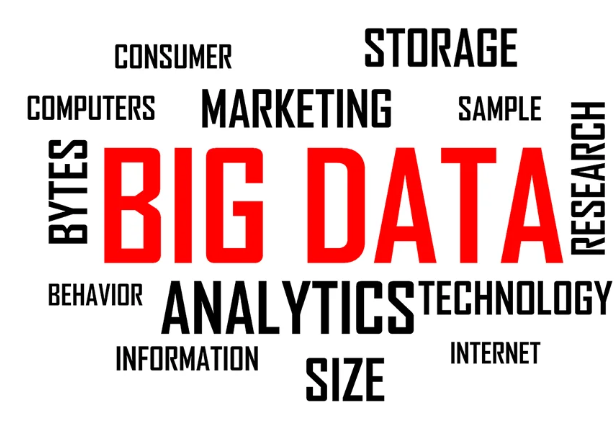Digital TransformationHow Advanced Analytics Is Helping Various Industries To Grow
30 March 2020

HOW ADVANCED ANALYTICS IS HELPING VARIOUS INDUSTRIES TO GROW
Advanced analytics is helping to boom various industries in their own different ways. This is one of the most decisive factors in present rapid industrial development and is proved to be indispensible for every industry.
Introduction
In today’s world, business organizations are increasingly demanding advanced analytics that allow them to use larger volumes and diverse types of data to uncover patterns and anomalies and predict outcomes.
Pharmacies are using advanced analytics to help predict the extent of any flu or allergy, six months in advance.
Farms are taking advantage of advanced analytics to see the time to plant, ways to optimize crop yields, and time to harvest. Manufacturers are also using advanced analytics to predict when a machine on the shop floor is going to fail, so they can perform preventive maintenance on it before it causes unexpected expense.
Financial services firms are taking advantage of technology to combat internal and external fraud. The use cases for technology and advanced analytics are limitless.
Here are some of the market trends that are dominating the advanced analytics space today
Consumers are looking for integrated hardware and software for analytics workloads
Advanced analytics consumers are looking for hardware that is pre-integrated and optimized to run advanced analytics workloads, giving traditional vendors an advantage in the market. These hardware offerings allow users to support big data and advanced analytics while maintaining high levels of speed, reliability and accuracy.
Vendors Are Bundling Horizontal and Vertical Use Cases
Customers are looking for horizontal and vertical end-to-end solutions more and more, and vendors are being forced to find specialized solutions for vertical problems like healthcare and finance. The objective of carrying out horizontal packages is to improve customer service and prevent fraud. The solutions come with best practices, automation of data preparation and model building, but they also allow for some customization.
The open source programming language R is becoming pervasive
R, an open source programming language for statistics, visualizations, and computational data, is becoming a conspicuous tool in advanced analytics offerings. Almost all of the major advanced analytics vendors have integrated R into their offerings, meaning they can now import R models. This allows data scientists, statisticians, and other sophisticated business users to take advantage of R within the package of analytics.
Python is opening its doors to general programmers in advanced analytics
Although R is typically under the domain of data scientists, who are the ones who can develop complex analytics models using deep and sophisticated data analytics, Python, the open source language, is bringing a lot of general programmers into the game.
Though Python doesn’t have the sophisticated and deep data analysis capabilities that R does, the community is working hard to develop more advanced and focused analytics capabilities for Python.
Visual interfaces are making advanced analytics increasingly accessible and affordable for business users
Data scientists are struggling to create analytics with teams experienced, due to lack of budget. At the same time, analytics is taking over and becoming part of decision-making at all levels of the business, making it more and more important for business users to have access to data. That combination has made advanced analytics providers focus on offering features that make their platforms easy to use.
Real-time data streams and the Internet of Things are on fire
The demand for analysis of real-time data streams is rapidifying as more devices connect to the Internet. By applying advanced analytics to these streams, organizations can respond with much more agility, whether it’s providing personalized recommendations while shopping online, or monitoring key metrics of a jet engine to identify small signs of failure even before the maintenance team notice.
Data visualization is becoming a business requirement
Data visualization is playing a huge role within organizations as they become inundated with data from social media, from machines, from streaming of data and other large volumes of structured, semi-structured and unstructured data. Visualizations are necessary because they help analysts discover situations that would be impossible to see in vertex data tables, spreadsheets, and charts.
Organizations are infusing Big Data analytics into all decision-making activities
It is no longer enough for analytics to be managed or managed solely by the statistics or data analytics department. Organizations are hoping to use analytics part of the decision-making process in every area of the business, including marketing, sales, operations, finance, and human resources.
Vendors are responding with holistic platforms that help integrate big data analytics processes with analytics efforts across the enterprise.
Several analytics services are located or hosted in the cloud
Advanced analytics providers are increasingly turning to the cloud to provide a service in a more affordable way, making it much more convenient and easy, and stand out from the crowd large companies able and willing to spend much more money on more complex on-premises solutions.
Conclusion
The application of advanced data analytics represents a huge technological leap that translates into the implementation of new control systems in the industrial environment. The computer allows the implementation of much more complex advanced control algorithms, such as optimal control or automatic control. The objective at first was to replace and improve analog regulators; however this objective was expanded given the capabilities of computers to carry out comprehensive control of manufacturing plants, as well as production management.
